 Click here for the high resolution images.
Click here for the high resolution images.
Wednesday, February 28, 2007
Friday, February 23, 2007
Guangxi Liubao Teas, A Comparison
The differences in their overall quality are quite apparent. The 3 Cranes is consistently made up of small, diced leaves, compressed into the shape of a bird nest (tuocha). The 1990 Loose, which originally came loose in a large bamboo basket weighing 50 jins (25kg/55lb), is made up of larger cuttings, twigs and a small amount of almost-whole leaves.
 Three Cranes 2000 Guangxi Liubao (tuocha)
Three Cranes 2000 Guangxi Liubao (tuocha)Source: Jing Tea Shop
$5 /100gr tuo
Parameter: in a 120ml gaiwan, filled half-full with dry leaves. Boiling water. 10 seconds rinse, and then infused for about 10s, 10s, 10s, 15s, 20s, 20s, 30s, 45s, stop.
Compressed into a bird’s nest form (tuocha), the leaves are small, broken, and dark brown in color. The liquor has high clarity. It appears rather viscous and easily opaque when infused with the stated parameter. The nose is woody and grassy/vegetal. Full bodied with a silky texture. Finishes short, clean and rather green. It’s a tea that comes across rather simple, yet there is absolutely nothing unpleasant about it.
2.5 stars (mg – g)
VL of the Tea Logic blog had posted a well-written tasting note on the 3 Cranes (click here).
While the liquor of both teas are dark and deep-colored, I observed that the 3 Cranes is more opaque and more viscous than the 1990 Loose. Relative to each other, the 3 Cranes is fuller bodied than its older peer. Soy milk thickness comes to mind about 3 Cranes’ full bodiedness. They are both silky smooth.
Taste wise, both teas are easygoing (read: simple), pleasant and soothing. They are woody, earthy, clean-tasting and without any unsettling pond-y or moldy smell. The 3 Cranes has a green/grassy/vegetal edge on the nose. The 1990 Loose, on the other hand, gives a sweet, woody smell with a tinge of mocha.
 Early 1990 Guangxi Liubao (loose leaves)
Early 1990 Guangxi Liubao (loose leaves)Source: Houde Fine Tea
$9.50 / 2oz (57gr)
Parameter: about the same as applied to the 3 Cranes tea
Mostly larger cuttings, twigs and some whole dry leaves, the color is deep brown and it smells like fresh wood/bark with a tinge of chocolate. The liquor is almost opaque-brown and high in clarity. Medium to full body with silky smooth texture. A simple tasting tea, yet this woody-earthy tea has a charming sweet aftertaste with a hint of metallic note. The first sip of each subsequent infusion celebrates and amplifies the sweet lingering aftertaste from the previous cup. Enjoyed for 8 infusions, but the tea could go for a few more.
3.5 stars (g – vg)
The most obvious difference in their taste is, actually, in their aftertaste. The 3 Cranes finishes short, clean, green, but not much else. The 1990 Loose finishes a touch metallic yet sweetish throughout. I really like the sweet aftertaste of the 1990 Loose that lingers for a long time. The most delicious part of this tea comes at the first sip of the next cup after resting for a couple of minutes in between infusions. That first sip somehow amplifies the lingering sweetness from the cup prior. Very nice. For this, I think the 1990 Loose is hands down the more interesting tea of the two.
A Little About Guangxi Liubao
The name of the tea itself is actually the name of the place where the tea is produced. This tea hails from a town named Liubao in the Cangwu County of Guangxi province.
At its heart, it is a black tea that underwent a wet fermentation process to mellow out the tea’s taste. The wet fermentation technique (“wo dui” in Chinese) is the same process used to make Yunnanese cooked/ripe/shou pu’er. Basically, fully oxidized leaves are exposed to a high degree of humidity in order to accelerate the fermentation for a certain period of time until the desired level is achieved. Unfortunately, I am not privy to any information on which cultivar Liubao tea is made from.
Teamakers in Guangxi had employed the wet fermentation technique for at least a couple of decades (around 1950's or earlier) before their Yunnanese counterparts adopted a similar technique in the 1970's. Guang of Houde Fine Tea said:
“I was told when Kumming tea technicians learned the cooked skill of Liu Bao from Guangzhou, the cooked process still took ~ 8 months to complete. A slow "cooked" process, with less fermentation degree. So 70's and 80's cooked puerhs are mostly kind of like "semi-cooked" in our current standard.
Since early 90's, they kept "improving" the cooked process and now it only takes about 1 month to complete.
Liu Bao was not only used in restaurant in HK/Macao, it was also often used in Temples to pack as "Pin An Cha" (you know Pin An - meaning safe) in a little plastic bag with a square red tag in the bag. Especially during Chinese New Year, people like to go to the Temples and receive the "Pin An Cha" for the safety in the following year.”
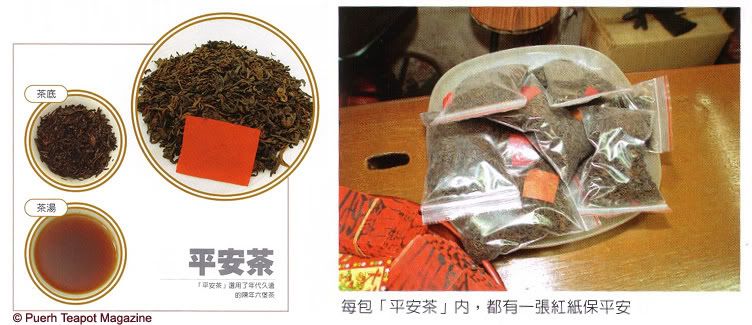
Mr. Chan Kam Pong in his new book “First Step to Chinese Puerh Tea” wrote:
"Guangxi Liubao (广西六堡) is the special production of Cangwu (苍梧) County, Guangxi province. Liubao was mainly exported to Southeast Asia through Hong Kong. Overseas Chinese always brew this tea because the taste of Liubao is smooth and rich in addition to its aging capacity. It was said that overseas Chinese stored Liubao at home as simple medicine for treatment of dysentery in the old days and for relieving mild illness(es)."
(First Step to Chinese Puerh Tea, pp 52-53, by Chan Kam Pong, Wushing Books Publication Co. Ltd., 2006)
Short Conclusion
At this tasting, the 1990 Loose is certainly the better of the two. After tasting the 1990 Loose, I think a good quality aged Liubao tea can give a similarly aged cooked pu’er a run for the money.
Will the 3 Cranes' grassiness evolve into something else as it ages? I will report back in a few years. I'm keeping several tuos for long term storage, and one tuo has been broken up and kept inside a porcelain jar for frequent visitations.
Monday, February 19, 2007
Red-Wine Spaghetti With Broccoli Rabe
Red-Wine Spaghetti with Broccoli Rabe
(6 generous servings)
1 3/4 pounds broccoli rabe, thick stems discarded
1 pound spaghetti
1 bottle red wine (750 ml - preferably zinfandel)
1 teaspoon sugar
1/3 cup extra-virgin olive oil
4 garlic cloves, finely chopped (2 tablespoons)
1 teaspoon dried red hot pepper flakes
3/4 teaspoon salt
1/2 teaspoon black pepper
1/2 cup grated Parmigiano-Reggiano
Cut broccoli rabe into 1-inch wide florets. Blanch in a 6 to 8 quart pot of boiling salted water, uncovered, 2 minutes. Transfer with slotted spoon to a large colander to drain, reserving broccoli-cooking liquid in pot, then transfer broccoli to a bowl.
Return cooking liquid to a boil and cook spaghetti, stirring occasionally, 5 minutes (pasta will not be fully cooked). Reserve 1 cup of pasta water and drain pasta in colander and return empty pot to stovetop.
Add wine and sugar to pot and boil vigorously 2 minutes until liquid is reduced a bit. Add spaghetti and shake pot to prevent pasta from sticking. Gently stir with tongs until coated and boil over high heat, stirring occasionally, until most of the liquid is absorbed, about 6 minutes (pasta will be al dente).
Immediately after adding spaghetti to wine mixture, cook garlic and red pepper flakes in the olive oil in a large, deep skillet over moderately low heat, shaking skillet occasionally, until garlic is pale golden, about 5 minutes. Add broccoli, salt, and pepper and cook, stirring, 1 minute. Add 1/2 cup of reserved pasta water. Pour broccoli into skillet with the spaghetti mixture and carefully toss with tongs to combine (skillet will be very full). Cook while stirring, about 2 minutes. Remove from heat, season with freshly ground black pepper and drizzle with a bit of olive oil.
Stir in the grated cheese. Serve immediately.
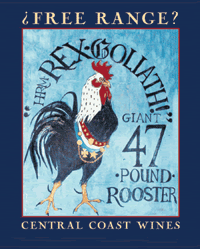 Phyll's Note:
Phyll's Note:- Broccoli rabe can be substituted with spinach
- I used a round, supple and fruit forward H.R.M. Rex Goliath zinfandel ($7.99)
- The dish came out a little too spicy. I recommend using a bit less red hot pepper flakes
- I added 1/4 lb of ground chicken and 1 cup of diced orange bell peppers for added color and acidity
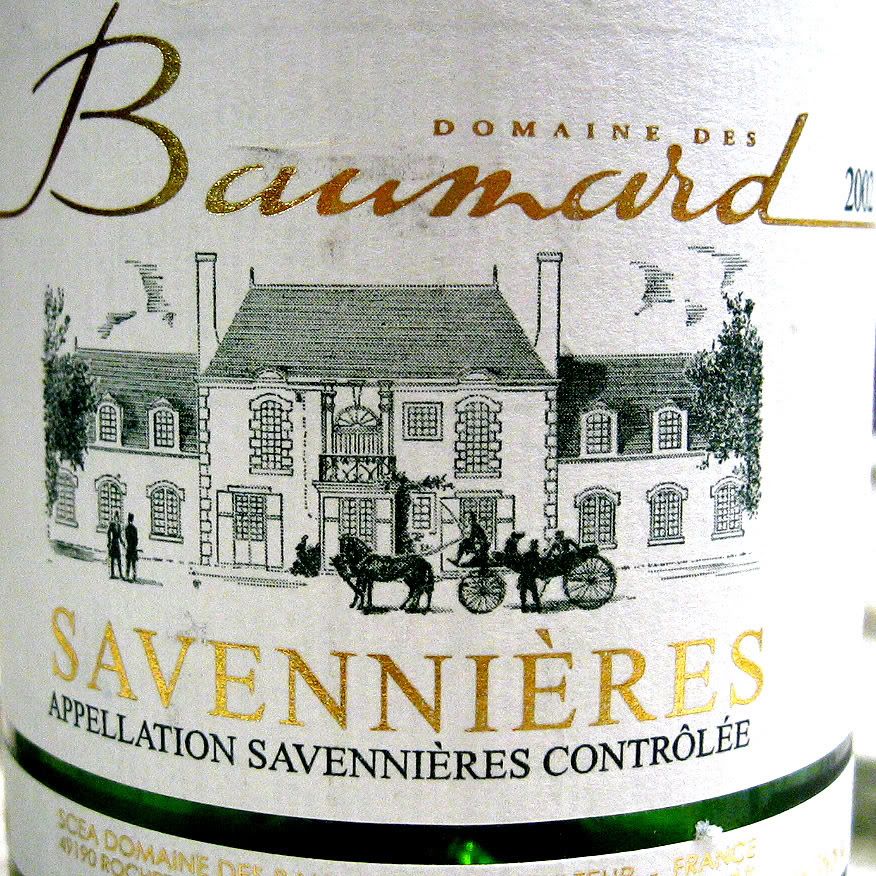 Wine pairing suggestion: this dish is bold tasting. The combination of red hot pepper flakes, black pepper, fruity zinfandel, and the slightly bitter broccoli rabe makes this dish tastes gutsy! So we paired it with a bottle of 2002 Domaine Baumard Savennieres ($18) from the Loire Valley. It excellently balanced the dish out. The wine was lithe and lively with fuji apple, orange rind, lime and pear. We think this dish would also go well with a kabinett level German Riesling or an Alsatian Pinot Gris.
Wine pairing suggestion: this dish is bold tasting. The combination of red hot pepper flakes, black pepper, fruity zinfandel, and the slightly bitter broccoli rabe makes this dish tastes gutsy! So we paired it with a bottle of 2002 Domaine Baumard Savennieres ($18) from the Loire Valley. It excellently balanced the dish out. The wine was lithe and lively with fuji apple, orange rind, lime and pear. We think this dish would also go well with a kabinett level German Riesling or an Alsatian Pinot Gris.
Saturday, February 17, 2007
Happy Lunar New Year!


A Prosperous New Year
The incoming lunar year is 4705 of the boar zodiac.
Ah, another Chinese / Lunar New Year. Time does fly, doesn't it? This time of the year always brings me down the memory lane to the years when I was just a snotty little boy in my hometown Jakarta. Since my dear paternal grandmother (rest her soul) lived with us -- coupled with the fact that my father is the eldest among his siblings -- we played host to all the uncles, aunts, cousins, and their friends. The custom is to pay our respects to our elders. Therefore, on the first and second days of the Chinese New Year, my house was always rowdy with me running around playing with my sisters, cousins and friends. One of the best part as a kid, of course, was receiving the red packets (hong pao) full of cash from the grown ups.
The next few days were usually filled with trips to the homes of other relatives and friends to whom we owed customary visits to. The trip usually started early in the day, and the first destination was always my maternal great-grandmother (both of my grandfathers and my maternal grandmother had passed away before I was born). After staying for a couple of hours at her house, without forgetting to receive the red bounties, we moved to visit other relatives and friends of the family. Each visit we made usually involved some sweet treats or another! The good ol' days.
Now as a parent, I need to make sure that my daughter gets to experience that growing up. My wife will make sure that she gets to experience the customs of Russian and Jewish holidays. And the both of us will also need to expose her to wonderful American traditions. What is life if not for these customs that let us share such moments together and feel belonged?
Happy New Year to all whether or not you celebrate the Lunar New Year! May you and your loved ones be blessed with health and well being.
Friday, February 16, 2007
How To Host an Afternoon Tea Party
 It is always fascinating to reflect on the different ways people around the world enjoy their tea. Whether it is sipped from a fragile porcelain cup, a large earthen bowl or a thimble-sized clay cup, and whether it is taken ceremoniously or not, tea plays an important role of being a social lubricant in every society.
It is always fascinating to reflect on the different ways people around the world enjoy their tea. Whether it is sipped from a fragile porcelain cup, a large earthen bowl or a thimble-sized clay cup, and whether it is taken ceremoniously or not, tea plays an important role of being a social lubricant in every society.Mr. David Clifton of Oxford University was kind to share his intimate knowledge on how to host a gracious afternoon tea party and the intricacies of its preparation. Without further ado, here are his elegant words:
 The actual tea as such is a minor part, and doesn't require as much attention as if you're serving someone familiar with Chinese tea. While the event of afternoon tea is something of an institution with which most people will have some familiarity, the actual leaf you use is a secondary concern. Remember that you're trying to appeal to a
The actual tea as such is a minor part, and doesn't require as much attention as if you're serving someone familiar with Chinese tea. While the event of afternoon tea is something of an institution with which most people will have some familiarity, the actual leaf you use is a secondary concern. Remember that you're trying to appeal to abroad range of tastes, so don't pick something too far from the mainstream (such as lapsang souchong, Earl Grey, etc.). Darjeeling is a classic for afternoon tea; or pick a robust, unchallenging blend.
Far more important is the attention that you pay to where you serve tea, how you serve tea, and in what you serve tea. If you're billing it as "afternoon tea", use your best china: a delicate, appealing pot, pleasant cups, matching saucers, and matching plates if you can. At the very least, don't use mugs / saucerless cups, or anything stained or chipped, if you can avoid it. It's time to break out your "Sunday best". There's no right answer, but the more effort you put in, the more honour you're paying your guests, and the more touched they'll be.
Standard issue afternoon tea usually comes with some home-made (by you!) scones, halved, and placed on a central plate. A small selection of jams (not marmalade) in small pots (with small serving spoons). A few curls of butter (not margarine or sunflower spread) placed in another dish. Most people would rather have a crumbling, poorly-constructed scone made by you than something androgynous bought from a shop. It doesn't matter if you got it wrong, but at least you tried. Never, ever serve "store food" (i.e., bought pre-made from a store) at afternoon tea - it's a great way to get people to question your taste. Officially, store food is for convenient only, and something one eats when one must. Definitely not at afternoon tea. I have known people to never return to a hotel based solely on the fact that the cakes were obviously store-bought.
Crustless small sandwiches (quarter-slice triangles) and small cream cakes are always good. We don't usually take muffins and those sorts of small baked goods for afternoon tea, but a Victoria Sponge or similar can be a classic. Delicate biscuits *perhaps*, but they're getting close to being categorised as "store food" unless they're particularly fine. Of course, home-made biscuits are great (but never cookies, which are anathema to afternoon tea).
Offer a single jug of good milk (of any variety as long as it's not 100% skimmed - semi-skimmed is least controversial these days), and have a bowl of brown and white rugged-cut sugar lumps (ideally with serving tongs). One little plate per place, butter knife, teaspoon, cup-and-saucer, napkin.
Pick a pleasant place for tea, with some pleasant unintrusive music (fresh and gentle). Clear and clean the table, pick a decent tablecloth. Unless you're going for a rustic farmhouse-style event, don't pick the kitchen table (and only go for a rustic farmhouse-style event if you have access to something approximating a rustic farmhouse). Fresh flowers in a small, understated arrangement are just fine.
Accommodate, don't capitulate. You're the host, and what you pick is, by default, what they will have. They have no choice, you're the boss, and you shouldn't pander to their every anticipated whim. Believe in yourself and have the confidence to understand that they are obliged to enjoy what you serve, as long as it's carefully done with no obvious tat (shop cakes, rough mugs, unpleasant teapot, poor setting).
Like Basho said, "learn the rules, then forget them". Afternoon tea is all about bringing a little gentility back to the busy world, so take it slowly. Prove to your guests that the art of conversation isn't dead, yet. :)
Everyone loves afternoon tea. Whether for gossip or for that particularly type of profundity that usually only arises from the nether regions of a pub, the fact that it is still with us is one of the more encouraging aspects of modern life.

The article above was first posted on Rec.Food.Drink.Tea discussion board, and it is posted here with Mr. Clifton’s express consent. Contact David Clifton.
Photo (c) Silks restaurant at Stonehedge Inn, Tyngsboro, MA.
Thursday, February 15, 2007
My First Darjeeling Oolongs

 How was the tea and which method yielded a better brew? I can't say for sure yet, though the Okayti Ivory is quite an aromatic and smooth tea by nature, whether brewed in seconds or in 5 minutes. More experimentation to be done with the Hillton Ebony as well.
How was the tea and which method yielded a better brew? I can't say for sure yet, though the Okayti Ivory is quite an aromatic and smooth tea by nature, whether brewed in seconds or in 5 minutes. More experimentation to be done with the Hillton Ebony as well.Wednesday, February 14, 2007
Happy Valentine's Day, My Gongfu Baby!
I caught our 18-month old daugther playing with my Wuyi Yixing and the pot brush for the first time! (Elmo was on TV)
Friday, February 9, 2007
Tuesday, February 6, 2007
Invitation To an Online Tasting: Darjeeling Oolongs
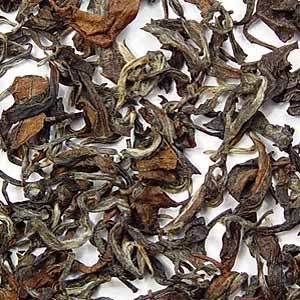 Come join an online tasting event that is being organized by T Ching.
Come join an online tasting event that is being organized by T Ching.Update: due to limited amount of samples, the list is now closed.
What: An online tasting of 3 to 4 teas, mainly oolong teas from Darjeeling, India
When: The teas are en route from India. Exact date TBD
Who: Samples from Ankit Lochan, organized by T Ching, with me helping out
Where: online, by submitting your tasting notes to T Ching
Why: It seems to me that several South Asian countries are starting to produce more of partially fermented teas (aka: oolong) these days, and Darjeeling is perhaps the best-known area that is actively researching and reviving this style. Let's find out what Darjeeling's terroir and the industry's know-how can offer to a category that has long been (and still is) dominated by China and Taiwan.
If you are able to join, this will make the tasting more fun and lend credence to the collective opinion. I have been asked by Michelle and Sandy of T Ching to help coordinate the event. Ankit Lochan of Lochan Tea Limited in India is generously providing the samples. Supply of the samples is limited, however, so please sign up at your earliest convenience by letting me know or, if you prefer, contact Michelle and Sandy with your mailing information.
Please don't hesitate to let me/Michelle/Sandy know if you have any questions.
More details of the tasting here.
Sunday, February 4, 2007
Tea With Ginger As a Cold Remedy
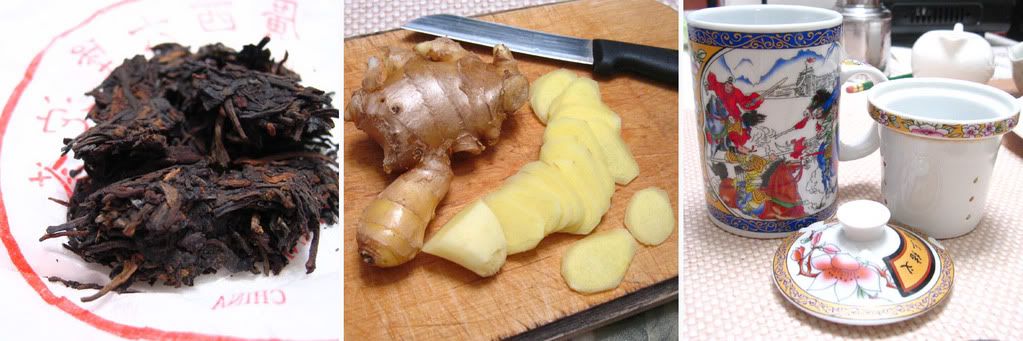 My approach is as simple as it gets. I thinly slice or julienne enough ginger depending on the level of warmth/spiciness I seek. I usually use about 10 to 15 round slices in a ~250ml teacup for a lot of warmth. Employing a simple, everyday porcelain teacup, I place the ginger slices on the bottom of the cup while the tea leaves go into the strainer. After getting the desired brew, I remove the strainer and let the tea stand for about 3 minutes to let the ginger release its essence.
My approach is as simple as it gets. I thinly slice or julienne enough ginger depending on the level of warmth/spiciness I seek. I usually use about 10 to 15 round slices in a ~250ml teacup for a lot of warmth. Employing a simple, everyday porcelain teacup, I place the ginger slices on the bottom of the cup while the tea leaves go into the strainer. After getting the desired brew, I remove the strainer and let the tea stand for about 3 minutes to let the ginger release its essence.
I prefer to use a black, a red, or a highly roasted oolong tea for the simple reason that they don't get stewed easily in boiling water. The hotter the water is, the more potent the ginger taste becomes. Earl Grey tea is also a personal favorite for this purpose as the bergamot oil gives an added soothing effect.
After finishing a cup, it is time for a Pig in a Blanket. I cover myself (the pig) with a thick blanket and go to sleep to sweat out the cold.
Sandy Bushberg, the publisher of T Ching who is also a qualified herbalist, suggested these natural remedies for cold to me:
Thanks Sandy!"In addition to drinking a lot of tea, you might want to consider an alcohol tincture of echinacea and elderberry. A teaspoon 4 times a day can help. Also, eyebright and osha are excellent as well for helping to deal with the congestion. In addition, every night before bed, you can cut up a few garlic cloves into swallowable sizes, coat them with olive oil or honey, and swallow them raw."
Saturday, February 3, 2007
Winter Cold & 2000 Guangxi Liu Bao Tea

I feel miserable and I yearn for a tea that soothes. This usually calls for a good dose of decent cooked pu'er. However and fortunately, a package of 6 to 7-year old Liu Bao tea from Jing Tea Shop just arrived and I opted for this instead. The following is in no way a fair assessment of the tea, as I enjoyed it with a muted sense of smell and taste.

 *cough, sniffle, a-choo!*
*cough, sniffle, a-choo!*agony of winter cold
this tea tastes like milk
~ Phyll in his pajama next to a big cuppa
Image: "Sick Puppy" from www.cartooncomedyclub.com
Friday, February 2, 2007
T Ching Store Opens Its Cyber Door

As I understood from my communication with Michelle and Sandy, more teas and wares of all types will be added to the selection as they become available and pass the quality threshold.
Kindly note that as a guest contributor to the T Ching blog, I maintain my independence from T Ching's for-profit endeavor(s). My sole interest in T Ching remains in the bona fide sharing and querying of tea-related knowledge. I am fortunate to be able to regard Michelle and Sandy as friends in the quest for tea knowledge and experience.